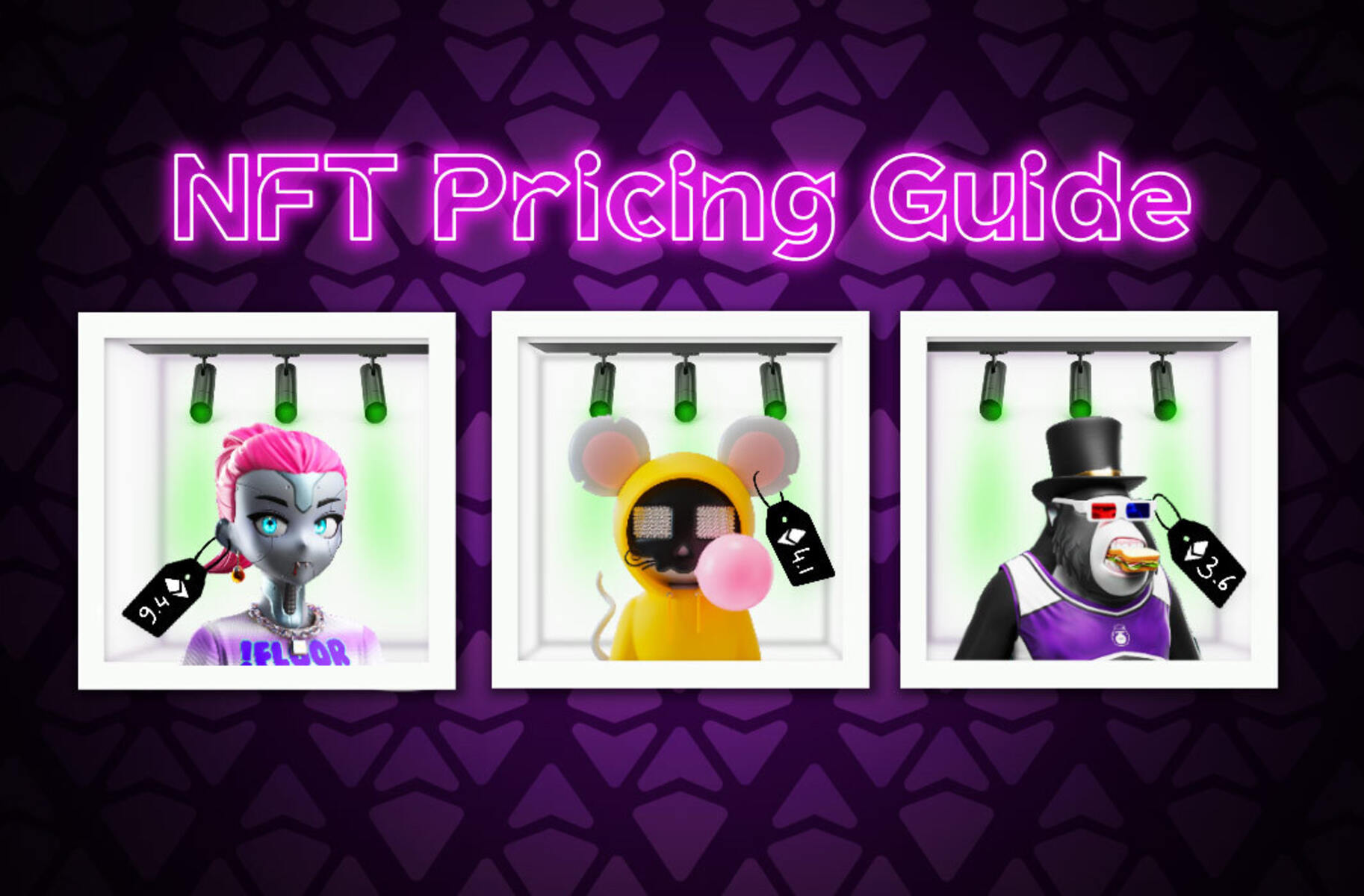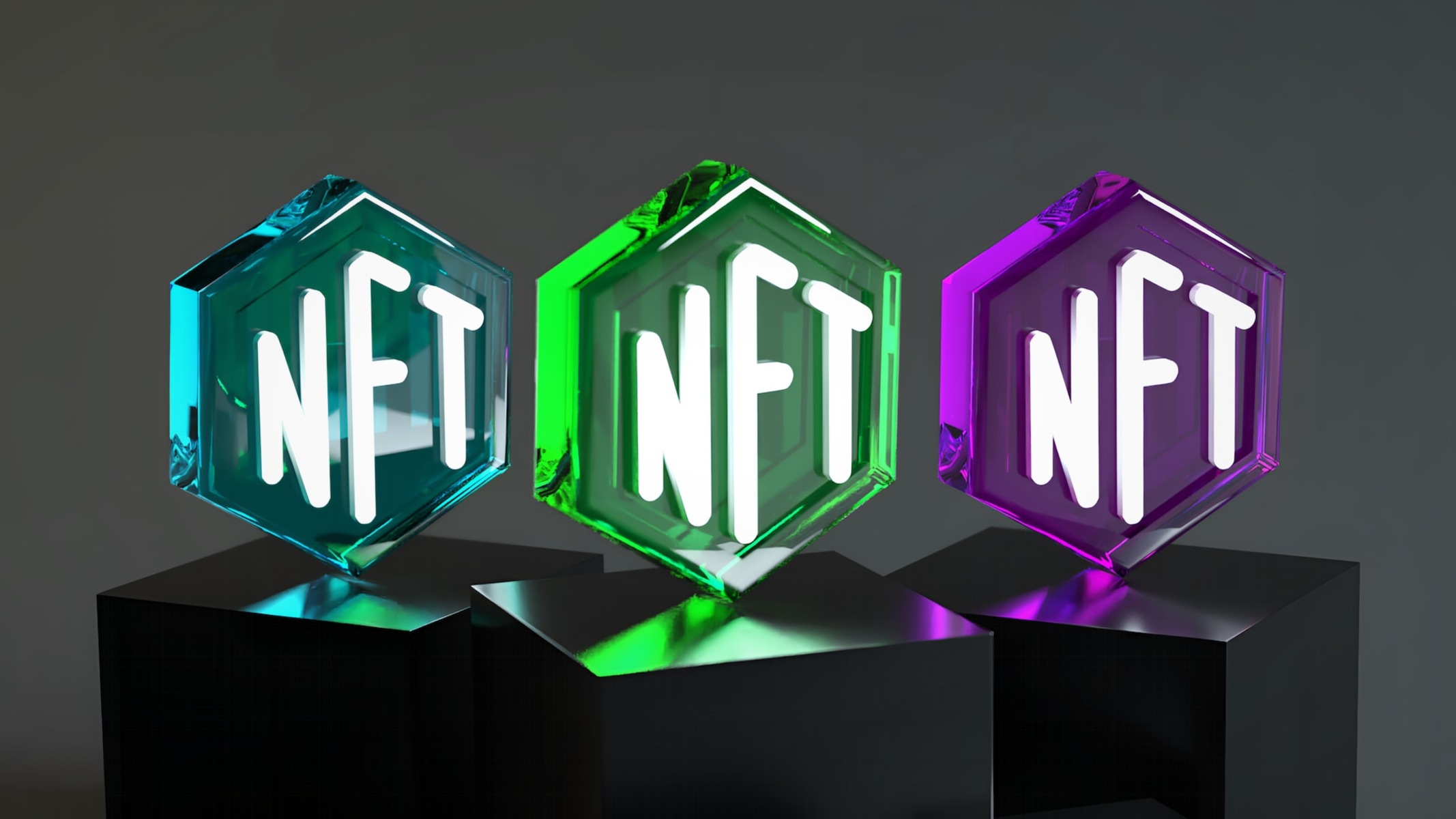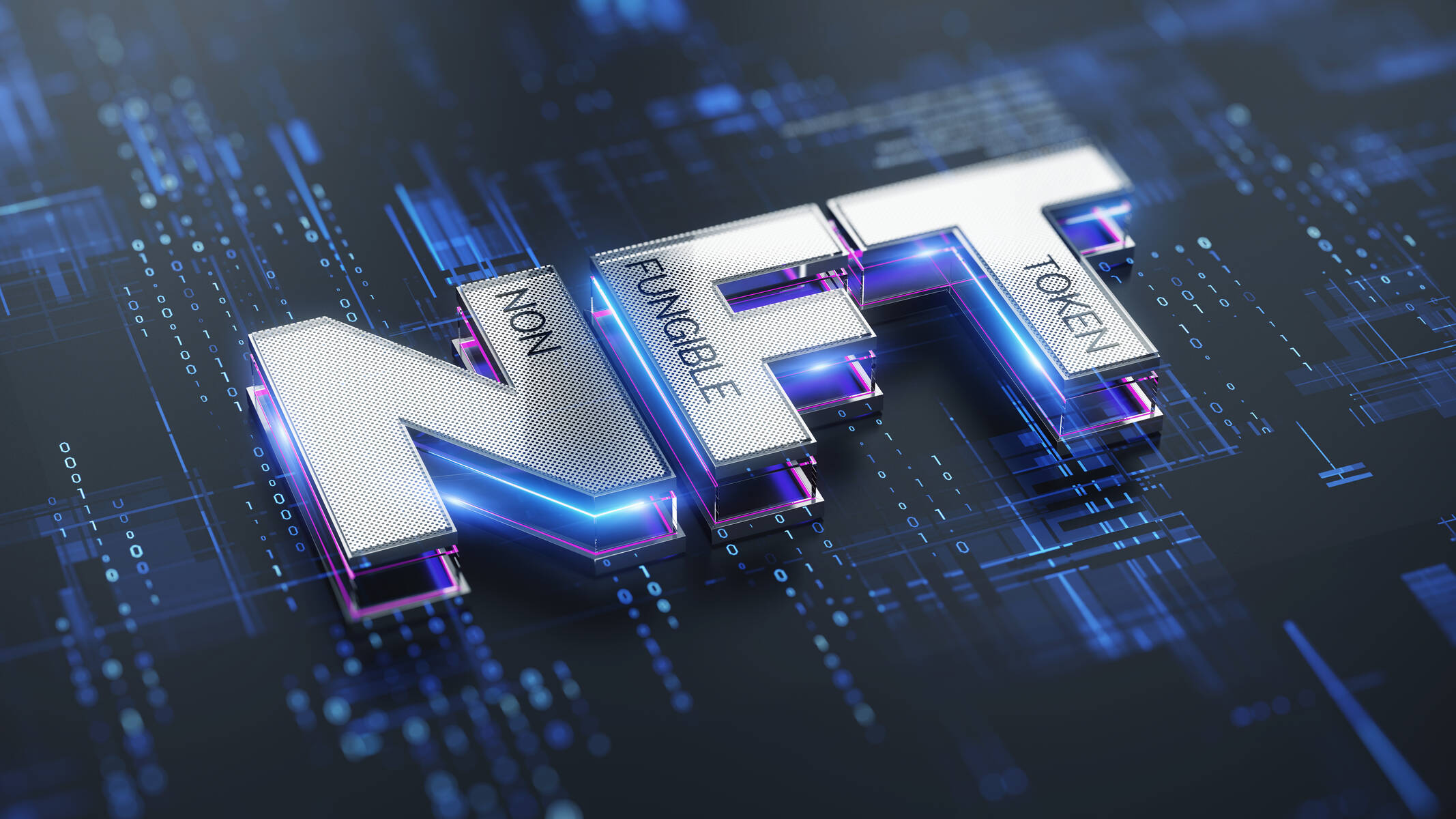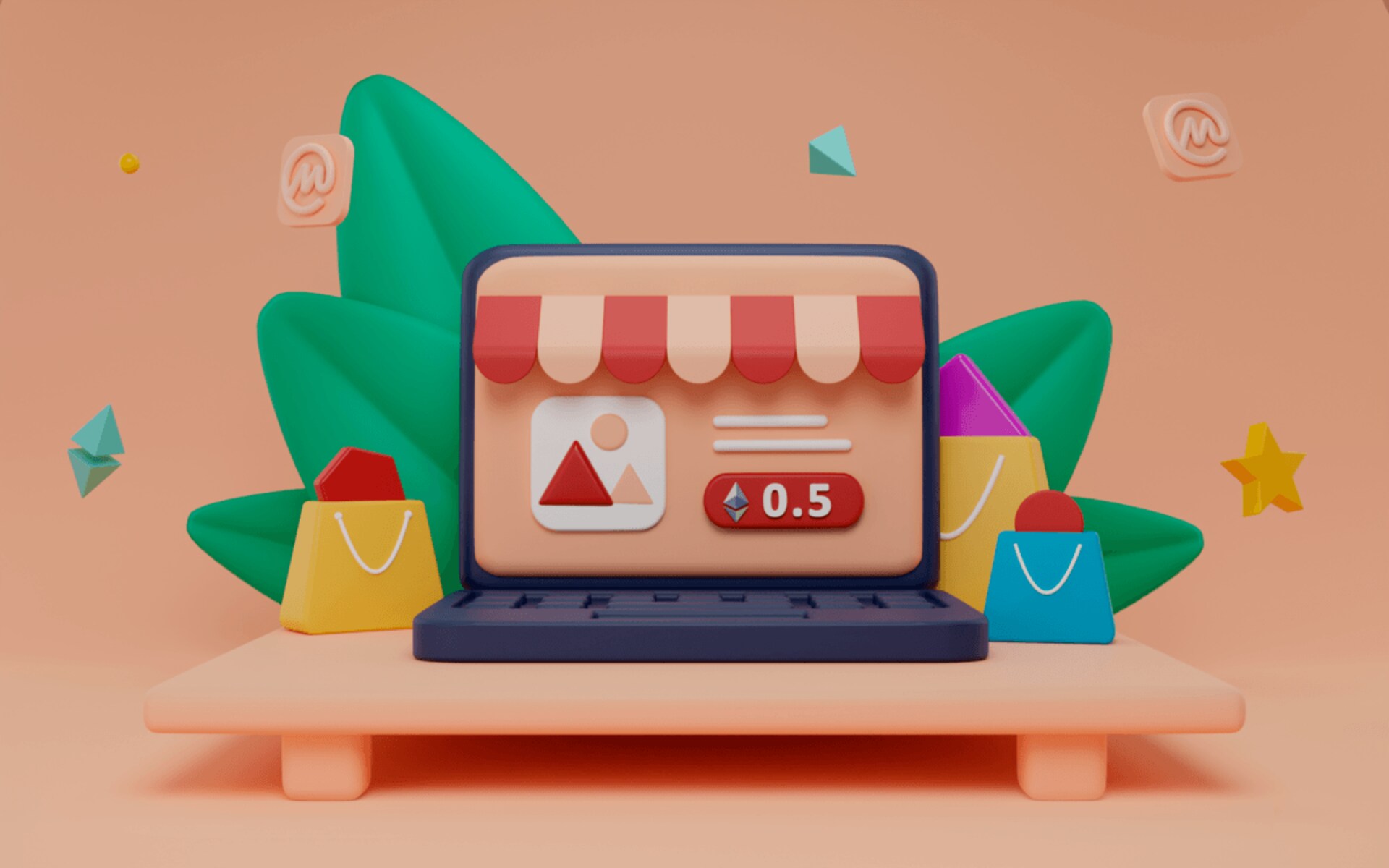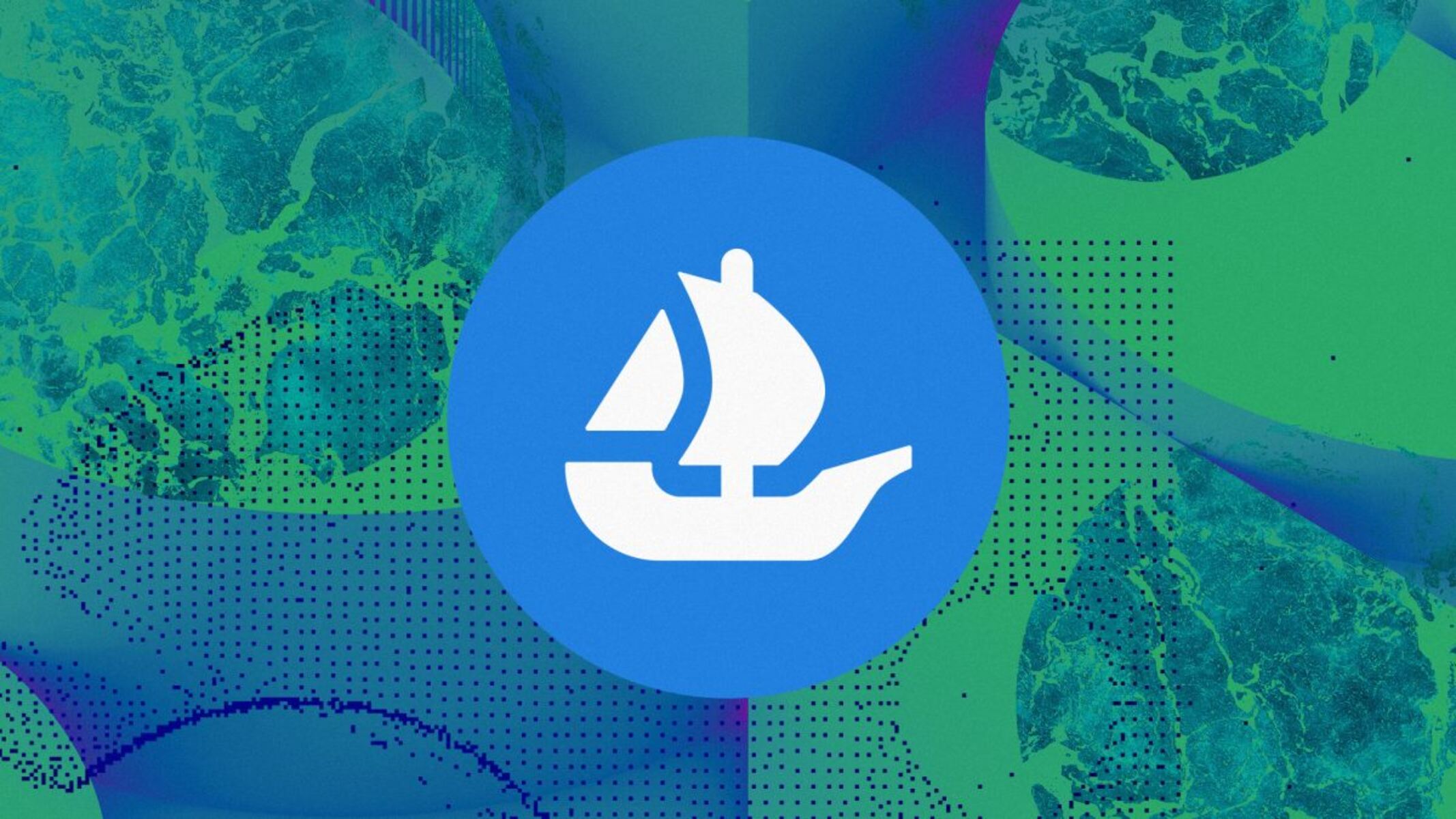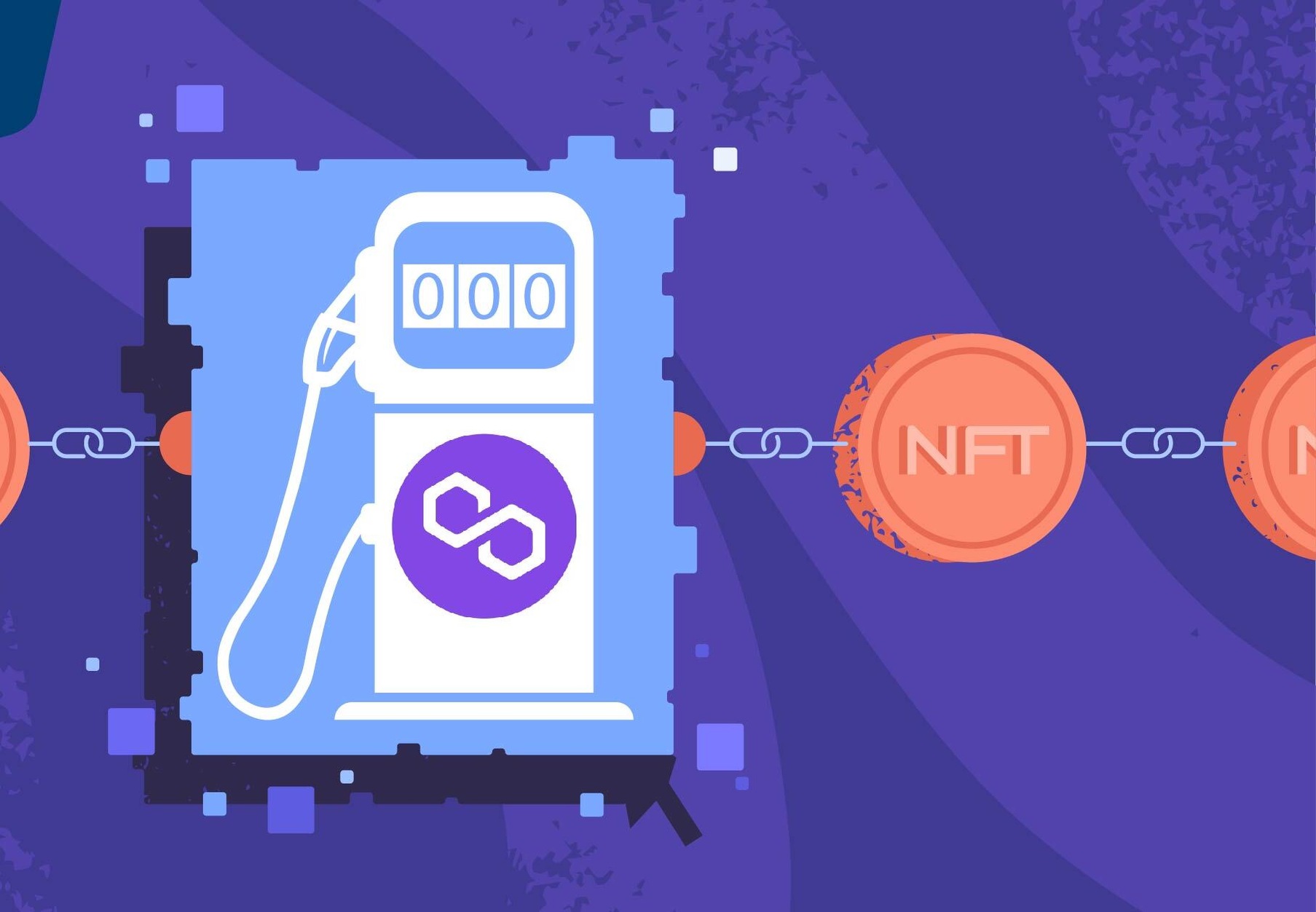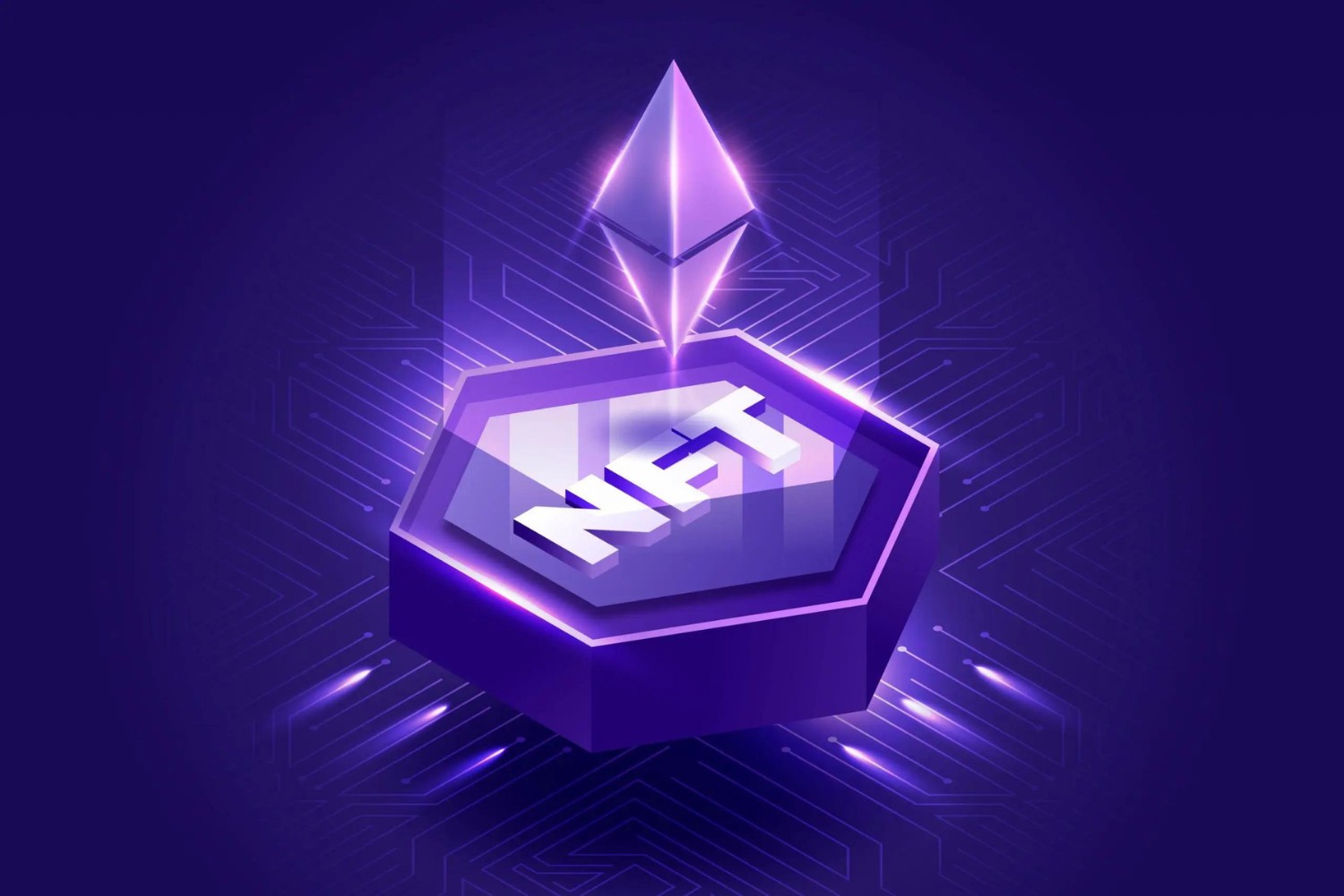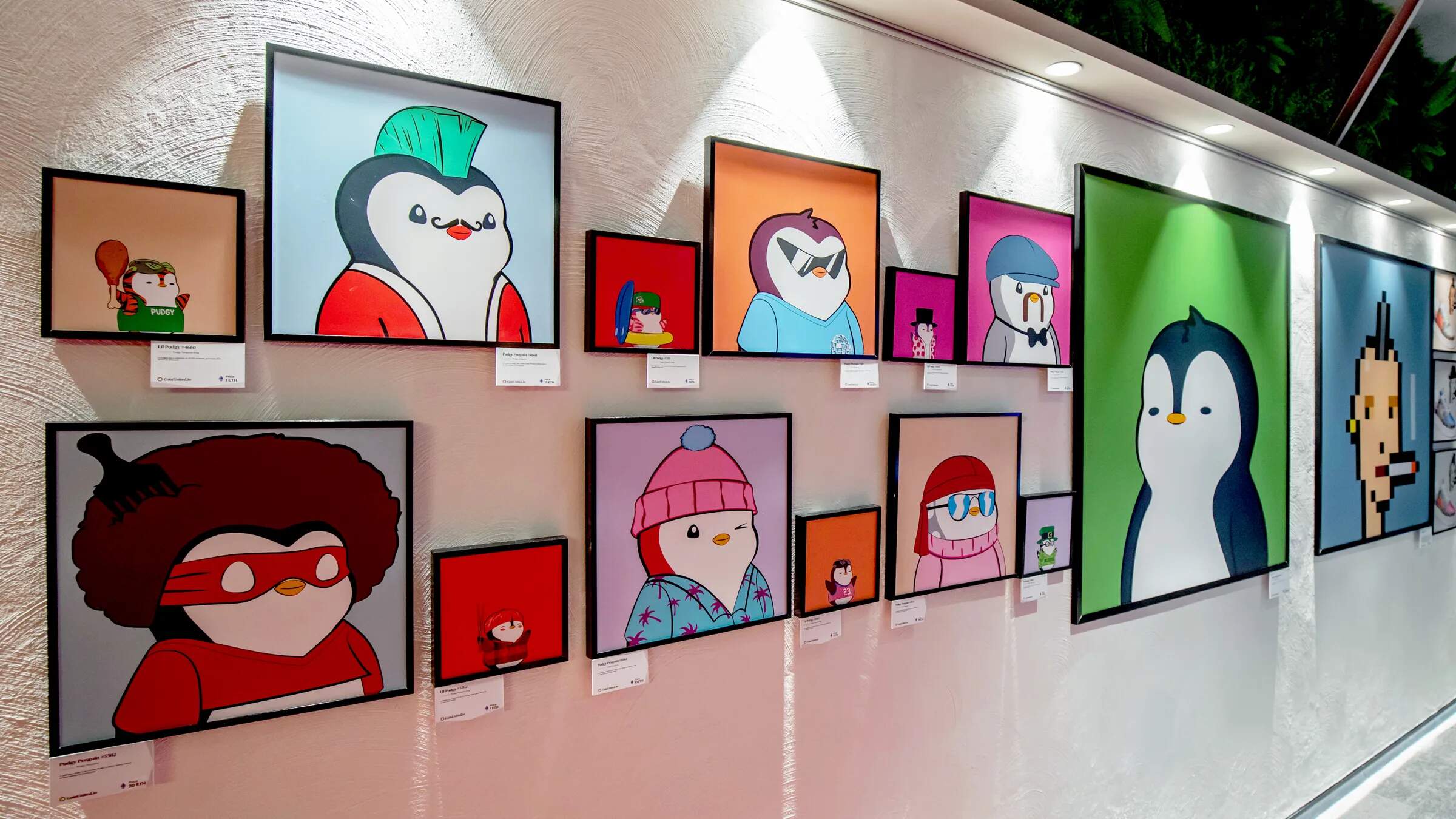Introduction
Welcome to the exciting world of Non-Fungible Tokens (NFTs)! If you’re an artist, creator, or collector, you’re likely familiar with the concept of NFTs and their potential to revolutionize the way we buy, sell, and own digital assets. One key aspect of NFTs is their pricing, which can be a challenging task for many individuals entering the space.
Setting the right price for your NFT is crucial to attracting potential buyers and ensuring that your artwork receives the recognition it deserves. However, with the ever-evolving nature of the digital art market, determining the optimal price can seem like a daunting task.
In this article, we will guide you through the process of pricing your NFT, taking into account various factors that can influence its value. Whether you’re a seasoned artist or just starting in the world of NFTs, we will provide you with valuable insights and tips to help you make informed decisions about pricing your digital creations.
It’s important to note that pricing is as much an art as it is a science. While there is no one-size-fits-all approach, understanding the key factors that contribute to NFT pricing will give you a solid foundation to make informed pricing decisions.
Before we delve into the details, it’s crucial to understand that NFT pricing is subjective and can vary significantly based on market demand, artistic reputation, scarcity, and various other factors. As the digital art market continues to evolve, it’s essential to stay informed and adapt your pricing strategy accordingly.
So, let’s jump in and explore the key factors to consider when pricing your NFT, so you can confidently navigate the exciting world of digital art and maximize the value of your creations.
Factors to Consider When Pricing Your NFT
When determining the price of your NFT, it’s vital to consider several factors that can influence its perceived value in the marketplace. While these factors may vary depending on your unique situation, here are some key considerations to keep in mind:
- Artist Reputation: Your reputation as an artist plays a significant role in determining the value of your NFT. If you have an established artistic career or a strong following, your artwork may command higher prices. Conversely, if you’re a relatively unknown artist, you may need to price your NFTs more competitively to attract buyers.
- Artistic Quality: The quality and craftsmanship of your artwork are crucial factors in pricing your NFT. Buyers are more likely to pay a premium for high-quality, visually appealing, and innovative creations that showcase your unique talents and skills.
- Scarcity and Rarity: The principle of supply and demand plays a significant role in NFT pricing. If your artwork is limited in quantity or has unique features that set it apart from others, it may be perceived as more valuable, and you can price it accordingly.
- Market Trends and Demand: Keeping a pulse on market trends and understanding the current demand for certain types of art or themes can help you strategically price your NFT. If there is a high demand for a particular style or subject matter that aligns with your artwork, you may be able to set a higher price.
- Economic Factors: Economic conditions, such as inflation and market volatility, can impact pricing decisions. It’s important to assess the economic climate and consider how external factors may affect the perceived value of your NFT in the market.
- Comparable Sales: Looking at similar NFTs sold in the past can give you valuable insights into how you can price your artwork. Analyzing the price range of comparable sales can help you gauge the market’s willingness to pay for similar digital assets.
- Artistic Intent: The intended purpose or message behind your artwork can influence how you price your NFT. If your creation has a strong emotional or intellectual impact, you may opt to set a higher price to reflect its intrinsic value to the buyer.
- Cost of Production: Considering the time, effort, and resources you invested in creating your NFT is essential. While cost alone may not determine the price, it can serve as a baseline to ensure that you cover expenses and generate a fair return on your investment.
- Perceived Value: Ultimately, the perceived value of your NFT by potential buyers will heavily influence its pricing. Factors such as the reputation of the platform hosting your NFT, the uniqueness of the concept, and the emotional connection it creates can all contribute to the perceived value.
By carefully considering these factors and conducting thorough research, you can confidently price your NFT in a way that accurately reflects its value and attracts the right audience.
Market Research
Before pricing your NFT, conducting thorough market research is essential to gain insights into the current trends, pricing patterns, and buyer preferences. This research will help you understand the competitive landscape and position your NFT effectively. Here are some key steps to consider when conducting market research:
- Explore NFT Platforms: Familiarize yourself with popular NFT platforms such as OpenSea, Rarible, or SuperRare. Analyze the types of artwork and NFTs being sold on these platforms to identify any prevailing trends or patterns.
- Study Comparable NFTs: Look for NFTs that are similar to yours in terms of style, medium, or subject matter. Analyze their pricing history, including the range of sale prices and the factors that contribute to their value. This information will help you establish a baseline for your pricing strategy.
- Consider Market Demand: Analyze the current demand for specific types of NFTs. Look for art genres, themes, or concepts that are popular among collectors. By aligning your artwork with market demand, you may be able to price it more competitively and attract potential buyers.
- Engage in NFT Communities: Join NFT communities, forums, and social media groups to interact with fellow artists, collectors, and enthusiasts. Engaging in conversations and seeking feedback can provide valuable insights into market dynamics and help you refine your pricing strategy.
- Follow Influencers and Experts: Follow renowned artists, influencers, and experts in the NFT space. Stay updated with their opinions, analysis, and predictions regarding NFT pricing and market trends. Their expertise can provide valuable guidance and help you make informed decisions.
- Track Auction Results: Keep an eye on recent auction results within the NFT ecosystem. Auctions can provide valuable information about the market’s willingness to pay premium prices for highly coveted NFTs. Studying successful auction outcomes can give you insights into pricing strategies that drive higher bids.
- Monitor Secondary Market Sales: Apart from new NFTs, tracking secondary market sales can provide insights into the long-term value and demand for specific artists or art collections. This information can help you understand how your NFT might perform in the future and guide your pricing decisions.
It’s important to note that market research is an ongoing process. The NFT market is dynamic and constantly evolving, so staying up-to-date with current trends and changes is crucial for making informed pricing decisions.
By conducting comprehensive market research, you empower yourself with the knowledge and insights to effectively position your NFT within the competitive landscape and maximize its potential value.
Evaluating the Quality of Your NFT
When pricing your NFT, it’s crucial to evaluate the quality of your digital artwork to determine its perceived value. Quality goes beyond just the visual appeal of the artwork; it encompasses various elements that contribute to its overall desirability. Here are some key factors to consider when evaluating the quality of your NFT:
- Technical Execution: Assess the technical aspects of your artwork, including resolution, file format, and overall presentation. Ensure that your NFT is visually appealing, well-crafted, and represents the digital medium at its best.
- Originality and Creativity: The uniqueness and originality of your artwork can greatly impact its value. Consider how your NFT stands out from other creations in terms of concept, style, composition, and overall artistic expression.
- Storytelling and Concept: Evaluate how effectively your NFT communicates a story or concept. Artworks that have a compelling narrative, symbolism, or evoke deep emotions can command higher prices due to the level of engagement they create.
- Attention to Detail: Pay attention to the small details and intricacies within your artwork. Fine craftsmanship, meticulous attention to detail, and thoughtful design elements can enhance the perceived value and demonstrate the level of effort invested in creating your NFT.
- Technical Innovations: Consider whether your artwork incorporates any innovative features or technologies. NFTs that utilize cutting-edge techniques, interactive elements, or augmented reality can generate additional value and attract tech-savvy collectors.
- Artistic Integrity: Evaluate how your NFT aligns with your artistic vision and expresses your unique style. Buyers appreciate artworks that resonate with the artist’s personal expression and authenticity, contributing to the perceived value of the piece.
- Emotional and Intellectual Impact: Consider the emotional or intellectual impact your artwork has on viewers. Art that provokes thought, challenges conventions, or elicits strong emotions can be highly valued by collectors and justify a higher price tag.
- Presentation and Packaging: The way you present and package your NFT can influence its perceived value. Consider creating a visually appealing and cohesive presentation, including comprehensive descriptions, additional content, and any extras that enhance the overall buyer experience.
By carefully evaluating these quality factors, you can gain a better understanding of the unique characteristics that contribute to your NFT’s value. This evaluation will help you assign a price that accurately reflects the quality of your digital artwork and attract buyers who appreciate your art’s artistic and technical merits.
Scarcity and Rarity
In the world of NFTs, scarcity and rarity play a significant role in determining the value of digital artwork. The principle of supply and demand applies, where limited or unique NFTs are often perceived as more valuable by collectors. Here are some key aspects to consider when evaluating the scarcity and rarity of your NFT:
- Limited Editions: By limiting the number of editions of your NFT, you create a sense of scarcity. Collectors may be willing to pay a premium for a piece that is part of a limited series, as it increases the exclusivity and rarity of the artwork.
- One-of-a-Kind Artworks: Creating a truly unique, one-of-a-kind NFT can significantly enhance its value. Irreplicable artwork can be highly sought after, as it ensures that the collector owns the only existing copy of that particular digital creation.
- Rare Attributes: Consider incorporating rare attributes or features into your NFT that make it stand out from others. These attributes could include special animations, sound effects, or hidden elements within the artwork. The rarity of these unique attributes can contribute to the perceived value.
- Exclusive Content or Access: Providing exclusive content or access to additional perks, such as behind-the-scenes footage, virtual events, or physical goods, can further enhance the rarity and value of your NFT. These added benefits make ownership more desirable and increase its exclusivity.
- Historical Significance: If your NFT holds historical or cultural significance, it can be perceived as more valuable. Artwork associated with important events, collaborations, or milestone achievements may have a higher rarity factor, attracting collectors who value the historical context.
- Ownership Transfers: Be mindful of the number of times your NFT has changed hands or been resold. NFTs that have had few ownership transfers may be seen as rarer, as they have been held by a limited number of collectors.
- Artwork Uniqueness: Evaluate how unique your artwork is compared to other existing NFTs. If your style, concept, or execution is distinct and different from others in the market, it adds to the rarity and scarcity of your NFT.
- Discontinued Collections: If you create NFT collections, retiring certain collections and declaring them as no longer available can increase their perceived rarity and desirability. This strategy can create a sense of urgency among collectors, driving up the value of the remaining pieces.
By carefully considering the scarcity and rarity factors of your NFT, you can leverage their perceived exclusivity to set a price that reflects the unique nature of your digital artwork. Remember that creating a sense of scarcity can generate heightened demand and increase the overall value of your NFT.
Setting a Base Price
Establishing a base price for your NFT is a crucial step in the pricing process. The base price serves as a starting point from which buyers can assess the value of your digital artwork. Here are some factors to consider when setting a base price:
- Cost of Production: Take into account the time, effort, and resources invested in creating your NFT. Consider any expenses related to software, hardware, or artistic materials. While cost alone may not determine the price, it can help ensure that you cover your production expenses and generate a fair return on investment.
- Market Research: Analyze comparable NFTs and their sale prices to gauge the market’s willingness to pay. Consider the prices of similar artworks in terms of style, medium, and quality. It’s essential to strike a balance between competitive pricing and maintaining the value and uniqueness of your artwork.
- Artist Reputation: Evaluate your artist reputation and the demand for your artwork. If you have an established brand or a significant following, you may be able to set a higher base price. However, if you’re just starting as an artist or still building your reputation, it may be more appropriate to start with a lower base price to attract potential buyers.
- Artistic Quality: Consider the level of craftsmanship, innovation, and uniqueness in your NFT. High-quality artwork that stands out from the competition can justify a higher base price. Evaluate the technical execution, originality, and creativity of your artwork to determine its value in the market.
- Scarcity and Rarity: If your NFT has limited editions, unique attributes, or one-of-a-kind features, you can set a higher base price to reflect its scarcity and exclusivity. The rarity factor can enhance the perceived value of your artwork.
- Additional Value: Evaluate any additional value you provide alongside your NFT. This could include exclusive content, physical merchandise, or access to special events. Consider how these extras contribute to the overall value and adjust your base price accordingly.
- Flexibility: It’s important to keep in mind that you can adjust your base price over time. If you’re uncertain about the optimal starting price, consider starting with a slightly lower base price and gradually increase it based on market response and demand.
Setting a base price involves finding the right balance between pricing competitively and ensuring your artwork is appropriately valued. It’s important to remember that pricing is subjective, and finding the optimal price can be a dynamic process that may require adjustments based on market trends and buyer feedback.
By carefully considering these factors and taking an informed approach, you can establish a solid base price for your NFT, setting the stage for potential buyers to assess and perceive the value of your digital artwork.
Including Additional Value
When pricing your NFT, offering additional value alongside your artwork can greatly enhance its perceived worth and attract potential buyers. Providing extras and unique benefits can set your NFT apart from others in the market. Here are some ways you can include additional value:
- Exclusive Content: Offer exclusive content to buyers of your NFT, such as behind-the-scenes videos, artist interviews, or digital assets related to the artwork. This additional content adds value and enhances the overall buyer experience.
- Physical Merchandise: Consider offering physical merchandise that complements your digital artwork. This can include limited edition prints, art books, posters, or even custom-made collectibles. Physical items create a tangible connection to your NFT and expand its appeal.
- Access to Events: Grant buyers exclusive access to virtual events, exhibitions, or workshops related to your artwork. This not only provides them with unique experiences but also adds a sense of exclusivity and value to your NFT.
- Collaborations: Collaborate with other artists or brands to create cross-promotional opportunities. By partnering with well-known artists or popular brands, you can leverage their fan base and offer a collaborative NFT that holds additional value and attracts a wider range of collectors.
- Utility or Functionality: Consider adding utility or functionality to your NFT. For example, if your artwork is a game character, you could allow the buyer to use it in a virtual world. By providing genuine usefulness, your NFT becomes more than just a collectible, increasing its value.
- Early Access or Exclusivity: Provide buyers with early access to future releases or the opportunity to be part of an exclusive collectors’ community. This builds a sense of belonging and makes your NFT more desirable, as it offers additional perks beyond the artwork itself.
- Charitable Contribution: Consider donating a portion of the proceeds from your NFT sales to a charitable cause. This not only adds social value to your artwork but also resonates with buyers who are passionate about making a positive impact.
- Personalized Touch: Offer customization or personalization options for your NFT. This can include adding the buyer’s name or a personalized message within the artwork itself, making the NFT feel more unique and special.
By including additional value, you elevate your NFT beyond a mere digital artwork and offer buyers a more comprehensive and meaningful experience. These supplementary offerings can justify a higher price and differentiate your NFT in a competitive market.
Always ensure that the additional value you provide aligns with the overall concept and integrity of your digital artwork. It should enhance the buyer’s connection and perception of your NFT, leading to increased demand and a higher perceived value.
Artistic Reputation and Branding
Building a strong artistic reputation and personal brand can significantly impact the value and pricing of your NFTs. Buyers often consider the artist’s reputation and branding when determining the worth and desirability of an artwork. Here are some key considerations to keep in mind:
- Consistency and Cohesion: Establish a cohesive artistic style or theme that is consistent across your body of work. This creates a recognizable brand identity and makes it easier for collectors to identify and associate your artwork with your name or brand.
- Showcase Expertise: Highlight your artistic skills and expertise in your chosen medium. Demonstrating mastery and a distinct artistic voice can elevate your reputation and make collectors more willing to pay a premium for your unique creations.
- Build an Online Presence: Utilize social media platforms, art communities, and your personal website to showcase your artwork and engage with your audience. Consistently sharing your artistic journey, behind-the-scenes insights, and interacting with enthusiasts can help build your artistic reputation and expand your reach.
- Establish Trust and Credibility: Engage in honest and transparent communication with your audience and buyers. Build trust by delivering on your promises, providing exceptional customer service, and promptly addressing any concerns or inquiries. A strong reputation for professionalism and integrity can positively impact the perceived value of your NFTs.
- Collaborations and Exhibitions: Collaborate with other artists, participate in group exhibitions, or showcase your artwork in virtual galleries. These collaborations and exhibitions not only expose your artwork to a wider audience but also provide credibility and validation to your artistic practice.
- Artistic Identity and Storytelling: Develop a strong artistic identity and narrative that resonates with your target audience. Share the inspiration, stories, and meaning behind your artwork to create a deeper connection with collectors and potential buyers. This narrative adds a layer of value and appreciation for your NFTs.
- Art Market Involvement: Engage with the broader art market outside of the NFT space. Participate in traditional art exhibitions, auctions, or collaborate with galleries. This involvement showcases your commitment to and recognition within the art community, enhancing your reputation as an artist.
- Educate and Share Knowledge: Share your artistic process, techniques, and insights through tutorials, workshops, or educational content. Educating and sharing your knowledge not only helps aspiring artists but also positions you as an authority in your field, further enhancing your reputation.
Investing in your artistic reputation and brand is a long-term strategy that can lead to increased demand and recognition for your NFTs. As your reputation and branding grow, collectors become more willing to invest in your artwork, thereby allowing you to command higher prices and expand your market reach.
Remember, building a reputable artistic brand takes time and consistent effort. Be patient and persistent in cultivating your reputation, and over time, your brand will become synonymous with quality, creativity, and value in the eyes of collectors.
Setting Auction or Fixed Price
When pricing your NFT, you have the option to either set a fixed price or use an auction format. Each approach has its advantages and considerations. Here are some factors to consider when deciding between setting an auction or a fixed price for your NFT:
Auction:
- Market-driven Pricing: An auction allows the market to determine the price of your NFT. Interested buyers bid against each other, driving up the price based on demand. This can lead to prices higher than what you might have set with a fixed price.
- Engagement and Excitement: Auctions can generate a sense of excitement among potential buyers, as they compete to win your NFT. The competitive nature of auctions can create a buzz around your artwork and attract more attention from collectors.
- Discovering True Market Value: Through an auction, you can uncover the true value of your NFT. Bidders’ willingness to compete and pay a premium can provide valuable insights into the demand and perceived value of your artwork.
- Time-bound Selling: Auctions have a set timeframe, creating a sense of urgency for buyers to place bids. This limited-time approach can drive faster sales and create a sense of exclusivity for the winning bidder.
Fixed Price:
- Control Over Pricing: With a fixed price, you have complete control over the price of your NFT. You can set a price that you believe reflects the value of your artwork and allows for a more predictable sales process.
- Quick and Direct Sale: Fixed-priced NFTs can sell quickly, especially if you attract buyers who are willing to purchase without the need for bidding or negotiation. This streamlined process can be appealing for both the artist and collectors looking for immediate ownership.
- Stability in Pricing: Setting a fixed price can create stability in the pricing of your NFT, allowing potential buyers to assess the value upfront. This can attract buyers who prefer a straightforward and transparent purchasing experience.
- Targeted Marketing: By setting a fixed price, you can tailor your marketing efforts to promote your NFT at the specific price point. This focused approach allows you to target potential buyers who are willing to pay your desired price.
The decision of whether to use an auction or a fixed price ultimately depends on your goals, market research, and personal preferences. You may choose to experiment with both approaches to understand what works best for your artwork and target audience.
Additionally, platforms may have varying options for auction duration, reserve prices, or automated pricing mechanisms. Familiarize yourself with the features and guidelines of the platform you are using to ensure your pricing strategy aligns with their requirements.
Remember, regardless of the pricing method you choose, it’s important to carefully consider your market research, buyer preferences, and the unique characteristics of your NFT to set a price that maximizes its value and encourages potential buyers to engage with your artwork.
Monitoring the Market and Adjusting Prices
Once you have set the initial price for your NFT, it’s crucial to continuously monitor the market and be prepared to make adjustments as needed. The digital art market is dynamic, and factors such as demand, trends, and buyer preferences can change over time. Here are some key considerations when monitoring the market and adjusting prices:
- Track Sales and Auction Results: Keep a close eye on sales and auction results of similar NFTs in your niche or style. Analyze the prices they achieve to gain insights into the market’s valuation and to accurately position your own artwork.
- Follow Market Trends: Stay informed about the latest trends and developments in the NFT space. Follow influential artists, collectors, and industry news to understand shifting preferences and emerging opportunities. Aligning your pricing strategy with market trends can enhance the perceived value of your NFT.
- Engage with the Community: Participate in discussions, forums, and social media groups related to NFTs. Engaging with the community allows you to stay connected with potential buyers and gain valuable insights into their preferences and expectations.
- Listen to Feedback: Pay attention to feedback from collectors, buyers, and the community. Take note of their comments, suggestions, and concerns regarding your pricing or artwork. Feedback can provide valuable insights into how you can adjust your pricing strategy to better align with buyer expectations.
- Adjusting Prices Responsibly: If you decide to adjust the price of your NFT, do so thoughtfully and responsibly. Consider market conditions, changes in your reputation or branding, and the uniqueness of your artwork. Incremental adjustments over time can help you find the optimal price point without alarming potential buyers or devaluing your artwork.
- Consider Marketing Efforts: Assess the performance of your marketing and promotional efforts. Evaluate the impact of different marketing channels, messaging, and strategies on buyer engagement and sales. Adjust your marketing approach as needed to reach a wider audience and drive demand for your NFTs.
- Take Advantage of Market Events: Capitalize on events and milestones that may increase demand for your artwork. For example, releasing a new collection during a significant art event or capitalizing on a viral trend can create a sense of urgency and drive buyers to your NFTs.
- Stay Adaptable: Be flexible and willing to adjust your pricing strategy as the market evolves. Continuously evaluate the performance of your NFTs, gather data, and be willing to make informed decisions based on market feedback and trends.
Remember, monitoring the market and adjusting prices is an ongoing process. Regularly review and assess the performance of your NFTs and stay informed about the factors shaping the digital art market. By staying adaptable and responsive, you can optimize your pricing strategy, attract more buyers, and maximize the value of your NFTs.
Conclusion
Pricing your NFT is a crucial aspect of navigating the dynamic world of digital art. By considering various factors such as artist reputation, artistic quality, scarcity, market trends, and additional value, you can confidently set a price that reflects the value of your artwork and attracts potential buyers.
Thorough market research helps you gain insights into current trends, buyer preferences, and comparable NFT sales. Evaluating the quality of your NFT ensures that you present a high-caliber digital creation to potential buyers, showcasing the craftsmanship and artistic skill that went into its creation.
Scarcity and rarity play a vital role in determining the perceived value of your NFT. By creating limited editions, incorporating unique attributes, or offering exclusive extras, you can enhance the desirability and exclusivity of your digital artwork.
Setting a base price serves as a starting point for potential buyers to assess the value of your NFT. You can choose to utilize auctions or fixed prices, each with its own benefits and considerations. Monitoring the market and adjusting prices based on factors such as sales trends, feedback, and market events enables you to align your pricing strategy with the evolving digital art market.
Building an artistic reputation and personal brand enhances the value and recognition of your NFTs. Consistency, engagement, and trustworthiness contribute to a strong reputation, attracting collectors who appreciate your artistic vision and craft.
As you embark on your NFT journey, remember to stay adaptable and responsive. By continuously monitoring the market, engaging with the community, and adjusting your pricing strategy, you can position yourself for success in the ever-evolving world of digital art.
Take the time to carefully consider each factor discussed in this article, applying them to your unique situation and artwork. Through a combination of market knowledge, artistic integrity, and strategic pricing decisions, you can find the ideal balance that maximizes the value of your NFTs and leads to a thriving career in the digital art space.







